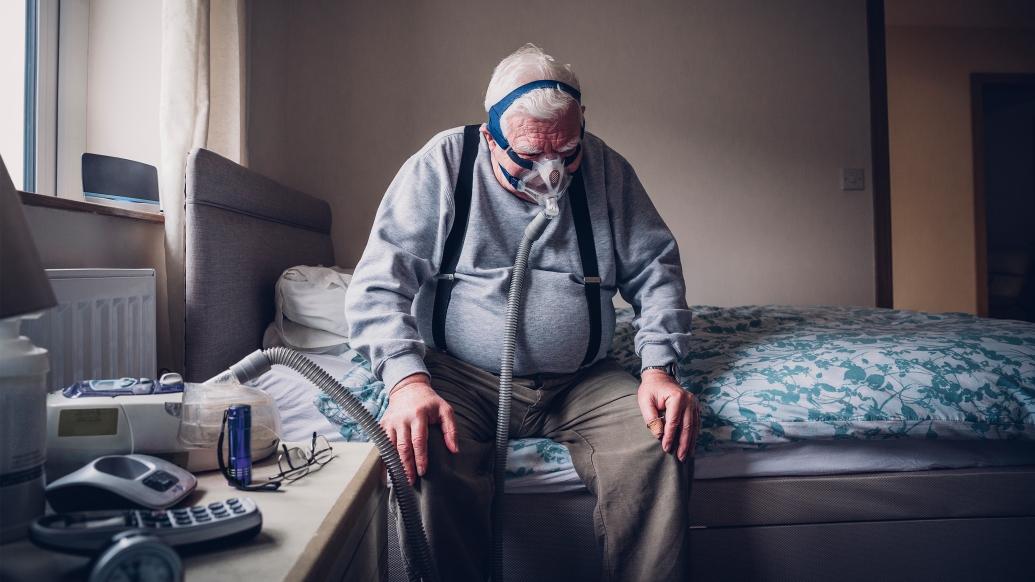Findings highlight benefits of non-invasive ventilation, such as BiPAP
11:15 AM
Author |

You breathe in oxygen and breathe out carbon dioxide, also known as CO2. But what happens when CO2 gas builds up in the blood?
Conventional wisdom has it that the body automatically adjusts to fluctuations in the amount of the gas in the blood and that as long as the blood pH is normal, patients will be ok.
Researchers at University of Michigan are challenging this wisdom and finding that a more active approach to controlling hypercapnia, or too much CO2, can result in patients living longer.
“In medicine, it’s been thought that as long as your blood pH is normal, you shouldn’t anything with elevated CO2—that it’s a result of your body’s normal way of compensating with changes due to disease,” said Philip Choi, M.D., clinical assistant professor in the Division of Pulmonary and Critical Care Medicine.
However, in a previous study, a research team led by Choi found that every 5mmHg increase in PaCO2, the unit of measurement of carbon dioxide in the blood, was associated with a higher risk of all-cause death in patients with COPD.
Their latest study, led by Choi and former U-M Medical School fellows Jose Victor Jimenez, M.D., now at Yale New Haven Hospital, and Jason Ackrivo, M.D., of Penn Medicine, looked back medical record data from 337 patients with a variety of conditions resulting in hypercapnia. The patients were treated in the U-M Health Assisted Ventilation Clinic, a unique, multi-disciplinary clinic that provides non-invasive ventilation therapy and routinely monitors patients’ CO2 levels.
The team found that the greater the reduction in PaCO2, the better the likelihood of survival.
These patients were treated with BiPAP (bilevel positive airway pressure), a machine that delivers air with oxygen through a facemask and used to treat breathing related complications resulting from sleep apnea, obesity, muscular dystrophy, and ALS, among other conditions.
“Prescribing these machines to reduce CO2 is a bit of a paradigm shift in how clinicians manage these patients,” said Choi. “We’re saying that in order to improve survival, you really have to target therapy to reducing CO2 as much as possible.”
He admits that using the machines is not as straightforward as taking a medication: the machines can be hard to sleep in, cause patients to feel claustrophobic, or need to be worn 24/7 for maximum efficacy—which can be incompatible with a patient’s everyday lifestyle.
Choi notes that more studies need to be done to identify the barriers to treatment for hypercapnia and to look for links between elevated CO2 and impaired immune function, leading to a high risk of infections, for example. The first hurdle, however, is to simply get more clinicians to believe the link between control of hypercapnia and reduced mortality from a wide range of diseases.
Said Choi, “Maybe down the line, a CO2 monitor will be on our Apple Watches but right now, many aren’t even thinking about it because they don’t recognize it as a problem.”
Paper cited: “Lowering PCO2 with Non-invasive Ventilation is Associated with Improved Survival in Chronic Hypercapnic Respiratory Failure,” Respiratory Care. DOI: 10.4187/respc

Explore a variety of health care news & stories by visiting the Health Lab home page for more articles.

Department of Communication at Michigan Medicine
Want top health & research news weekly? Sign up for Health Lab’s newsletters today!





